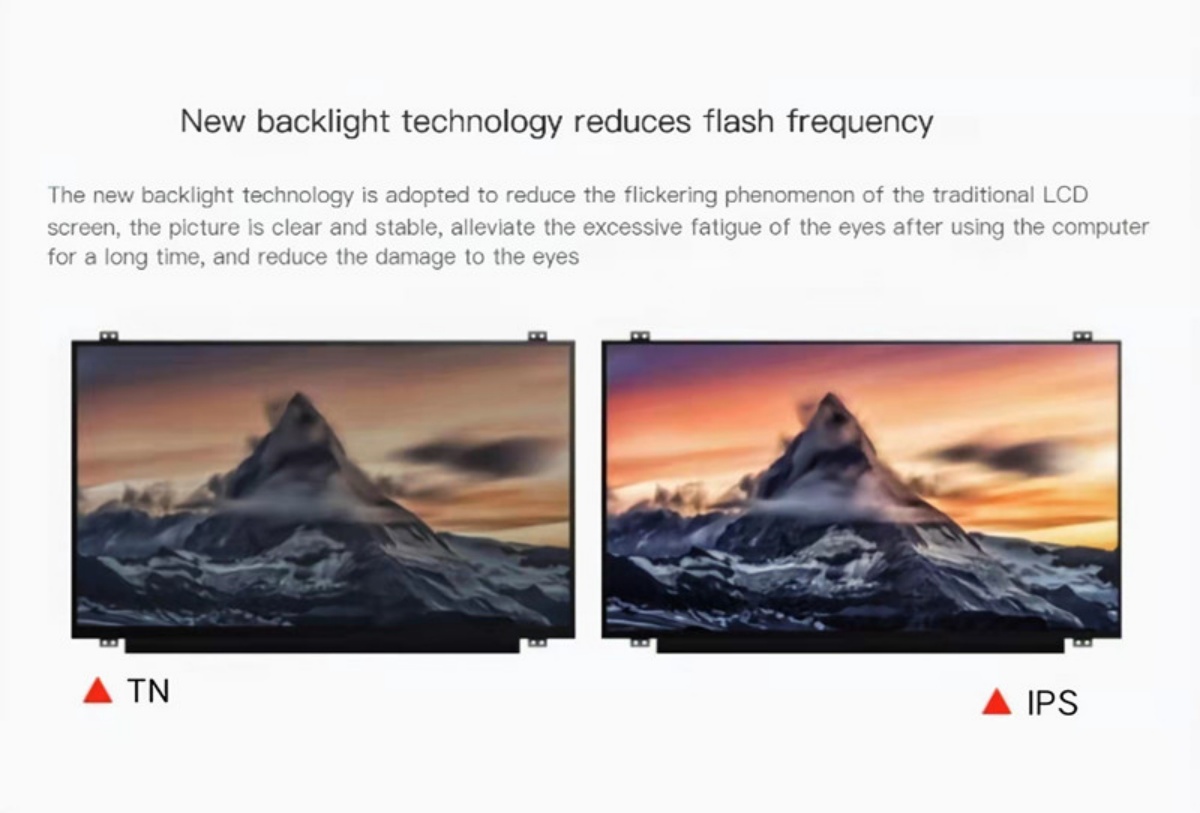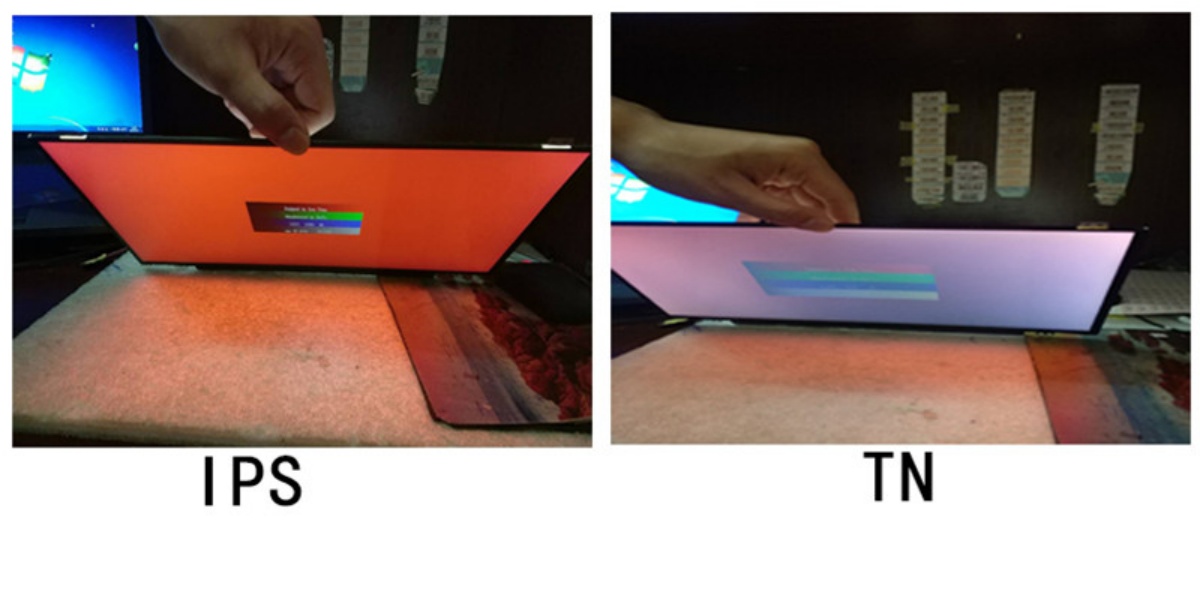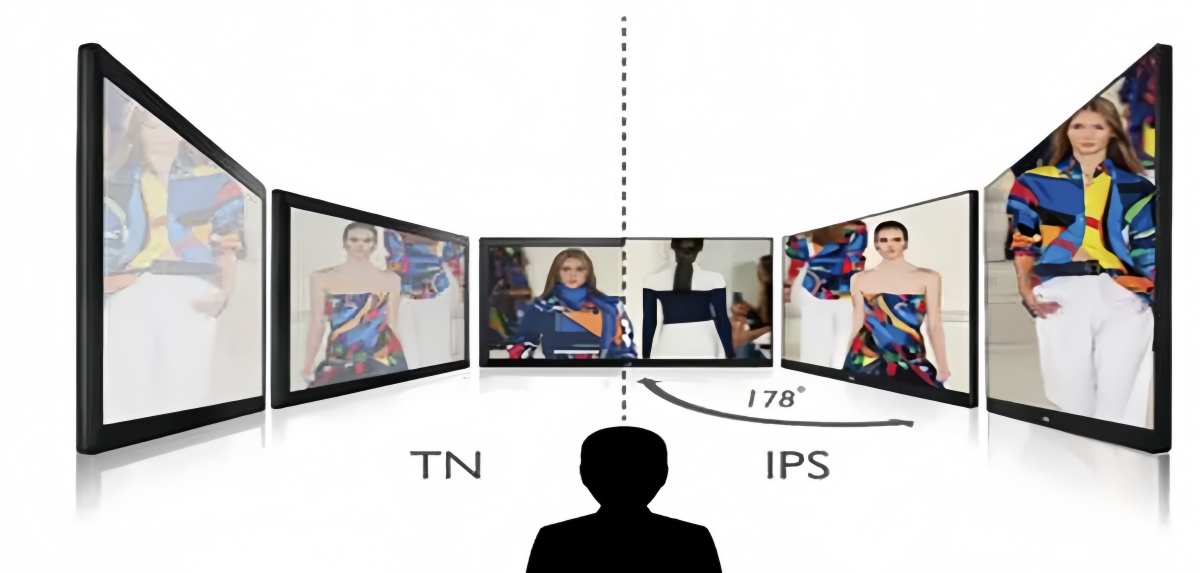


### **IPS vs. TN Screen Technology Comparison Analysis: A Comprehensive Breakdown from Principles to Applications**
—
#### **I. Differences in Technical Principles and Structures**
1. **IPS (In-Plane Switching)**
– **Liquid Crystal Alignment**: Molecules are arranged horizontally parallel to the glass substrate. A lateral electric field rotates them, minimizing light path deviation.
– **Backlight Penetration**: Stable light transmission reduces color shift, enabling wide viewing angles and color accuracy.
– **Layered Structure**: Includes additional optical layers (e.g., compensation films), resulting in thicker panels and higher costs.
2. **TN (Twisted Nematic)**
– **Liquid Crystal Alignment**: Molecules are vertically aligned in a twisted spiral structure when unpowered; they straighten rapidly when voltage is applied, controlling light via polarizers.
– **Response Mechanism**: Short molecular movement enables ultra-fast response times, but viewing angle changes cause color distortion.
– **Simplified Structure**: Fewer layers, thinner panels, and lower manufacturing costs.
—
#### **II. Core Performance Comparison**
| **Parameter** | **IPS** | **TN** |
|———————–|—————————————-|—————————————-|
| **Viewing Angles** | 178°/178° (no color shift) | 160°/170° (vertical color distortion) |
| **Color Gamut** | 90%~100% sRGB (high-end >95% DCI-P3) | 60%~80% sRGB (low saturation) |
| **Color Depth** | Native 8-bit, some 10-bit (1.07B colors) | 6-bit + FRC (simulated 8-bit, 262K colors) |
| **Response Time** | 1ms (Fast IPS) ~5ms (standard IPS) | 0.5ms~1ms (native ultra-fast) |
| **Contrast Ratio** | 1000:1~1500:1 (superior dark details) | 600:1~800:1 (grayish blacks) |
| **Refresh Rate** | 60Hz~360Hz (high-end models costly) | 144Hz~360Hz (low-cost high refresh) |
| **Power Consumption** | Higher (stronger backlight needs) | Lower (simple structure) |
| **Panel Thickness** | Thicker (multi-layer design) | Thinner (lightweight) |
—
#### **III. Real-World Experience Differences**
1. **Gaming**
– **IPS**:
– **Pros**: Rich colors, clear dark details (e.g., *Cyberpunk 2077* night scenes); wide angles suit multi-monitor setups.
– **Cons**: Motion blur on traditional IPS; improved but slightly slower than TN even with Fast IPS.
– **TN**:
– **Pros**: 0.5ms response eliminates motion blur (e.g., *CS2* quick turns); affordable high refresh rates (240Hz).
– **Cons**: Washed-out colors, lost shadow details (e.g., *Elden Ring* caves).
2. **Design & Office Work**
– **IPS**:
– **Adobe RGB Coverage**: Accurate color reproduction (critical for designers).
– **178° Viewing Angles**: Hassle-free side views for meetings or multi-screen workflows.
– **TN**:
– **Flaws**: Vertical color shift distorts Excel rows; color banding in photo editing.
3. **Entertainment**
– **IPS**:
– **HDR Performance**: High contrast and wide gamut enhance immersion (e.g., Netflix HDR).
– **IPS Glow**: Mild corner backlight bleed affects dark scenes in dim environments.
– **TN**:
– **Weaknesses**: Grayish blacks ruin cinematic atmosphere; poor angles hinder group viewing.
—
#### **IV. Technological Evolution & Market Positioning**
1. **IPS Advancements**
– **Nano IPS**: LG’s quantum dot tech expands gamut to 98% DCI-P3 with 1ms response (e.g., LG 27GP950).
– **Fast IPS**: AU Optronics optimizes voltage for speed and color balance (e.g., ASUS ROG Swift).
– **Mini-LED IPS**: Local dimming boosts contrast to 100,000:1 (e.g., Apple Pro Display XDR).
2. **TN’s Niche Survival**
– **Extreme Esports**: Some pros still use TN (e.g., ZOWIE XL2566K 360Hz TN).
– **Budget High Refresh**: Entry-level gaming monitors (e.g., AOC 24G2U 144Hz TN).
3. **Competing Technologies**
– **OLED**: Self-emissive pixels surpass IPS/TN in color and speed, but risk burn-in.
– **VA Panels**: Samsung’s curved screens prioritize contrast (3000:1), with response times between IPS and TN.
—
#### **V. Purchasing Guide**
1. **Prioritize IPS for**:
– **Content Creation**: Photoshop, Premiere, 3D rendering.
– **Office Use**: Long document work, multi-tasking, video calls.
– **Media & Gaming**: AAA games, HDR movies, home entertainment.
2. **Consider TN for**:
– **Hardcore Esports**: Pro FPS players needing 0.5ms response + 360Hz refresh.
– **Tight Budget**: Sub-$150 entry-level monitors (1080p 144Hz TN).
3. **Avoid Pitfalls**:
– **”Fake IPS”**: Low-end IPS may have narrow gamut (~45% NTSC).
– **TN Testing**: Check vertical color shift by tilting the screen.
—
#### **VI. Future Trends**
– **IPS Dominance**: Fast IPS costs drop, making it the mainstream for gaming.
– **TN’s Decline**: Limited to ultra-budget or experimental high-refresh niches (e.g., 540Hz prototypes).
– **Tech Convergence**: IPS + Mini-LED and OLED longevity improvements may phase out TN.
—
### **Conclusion**
The IPS vs. TN debate boils down to **“color fidelity vs. ultimate responsiveness”**:
– **IPS** is the all-rounder for quality and versatility.
– **TN** remains a specialist for esports extremes.
As IPS narrows the speed gap and TN fades due to color limitations, IPS is now the default choice unless you’re a pro gamer or on a strict budget.

